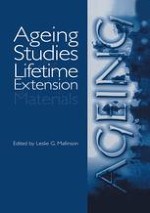2001 | OriginalPaper | Buchkapitel
Techniques for Monitoring Material Degradation
verfasst von : J. E. Field
Erschienen in: Ageing Studies and Lifetime Extension of Materials
Verlag: Springer US
Enthalten in: Professional Book Archive
Aktivieren Sie unsere intelligente Suche, um passende Fachinhalte oder Patente zu finden.
Wählen Sie Textabschnitte aus um mit Künstlicher Intelligenz passenden Patente zu finden. powered by
Markieren Sie Textabschnitte, um KI-gestützt weitere passende Inhalte zu finden. powered by
The paper covers the development of techniques in two main areas. The first is that of damage, strength and transmission losses of “window” materials in aerospace, aircraft and missile applications. In such applications, the “window” may be subjected to liquid impact (rain) or solid particle impact (dust, sand, ice). The “window” or dome may need to be transparent in the visible, the micro-wave or infra-red. Relevant impact velocities may be up to Mach 2 for aircraft and up to Mach 4 and beyond for missiles. The paper describes techniques which we have developed for producing very controlled and accurate impacts for rain, dust, sand and ice. The theory of liquid impact is used to show that water drop impacts can be simulated by jet impact provided that the liquid is coherent and has a smooth, curved front surface. A multiple impact jet apparatus (MIJA) for measuring the rain erosion response of materials is described. For dust and sand, we have designed an erosion rig of the gas flow type. The apparatus can handle particles from 20 μm up to millimetre size at velocities up to ca. 250 m s−1. For large solid particles, including ice, we use a range of gas guns. Advantages of our approach are that we can produce controlled and reproducible impacts and can provide data on threshold velocities for damage and strength and transmission losses. Data on a wide range of materials, including chemically vapour deposited (CVD) diamond, is presented. The second area concerns failure mechanisms and strength loss in polymer bonded explosives (PBXs). The advantages of using environmental scanning electron microscopy (ESEM) for high magnification deformation studies are illustrated and discussed. For quantitative measurement of strains to failure, a combination of optical microscopy and moiré interferometry has been developed. This method allows strain to be measured on the sub-micron level while at the same time recording the underlying microstructure. Such methods are of general interest to degradation mechanisms in composites.
